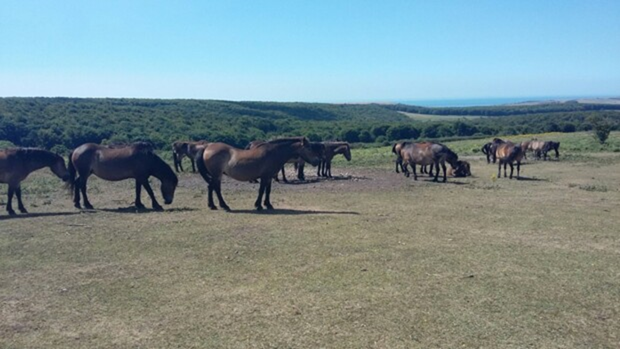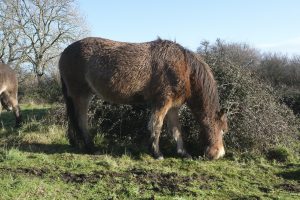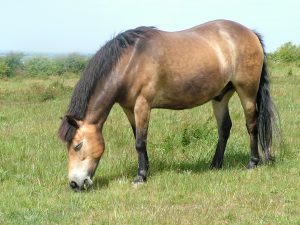Conservation Grazing
As a result of the equine’s basic needs, having adapted to a forage diet of relatively low-nutrient plants, some horses and ponies are used for habitat restoration and management.
In many conservation grazing situations, hardy ponies like Exmoors are used, often where problem species might be preventing habitat restoration or establishment. They can also be used for ‘mob grazing’. This is short bursts of intensive grazing over fairly small areas. This can benefit some species or habitats and is often used to help to control species that have become invasive. In the South Downs National Park ponies are mainly used to manage both heathlands and species-rich grasslands. Some examples of equine conservation grazing include;
Lullington Heath
Here at Lullington Heath (a Site of Special Scientific Interest for its chalk heath and chalk grassland habitats), these ponies are helping to get on top of gorse which is becoming invasive in parts of the site. The gorse is restricting more sensitive chalk-heath species and preventing fine grasses from re-establishing.

Ponies are also out grazing during the winter on sensitive sites such as Birling Gap, around Belle Tout lighthouse, and Cissbury Ring.
Butser Hill
These Exmoor ponies are grazing at Butser Hill, a National Nature Reserve and Site of Special Scientific Interest, in part designated for its species-rich chalk grassland. On Butser Hill, sheep and ponies are both used to graze the site as each grazes in a different way, favouring different species and benefitting diversity overall.


Plantlife has information which explains more about different grazing animals.
These hardy ponies might be at the extreme end of conservation grazing. But it is possible for all equines to play some part in improving diversity in grasslands or restoring and managing species-rich grasslands in addition to their day job.
Each situation will be different. The soils, area of land available and possibly type of horse will dictate to a large extent what can be achieved. Some may be able to make significant improvements in species numbers within their grassland, whilst others may only be able to make small improvements.
However big or small, making a change to land management can achieve excellent outcomes for horses, wildlife and whole landscapes, whether secured through ReNature or as part of a planning permission. These next pages set out some ways this could be achieved.
